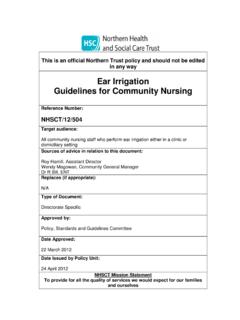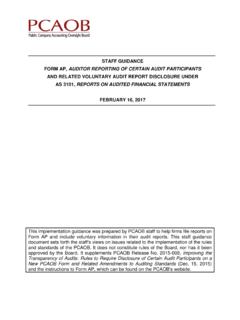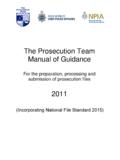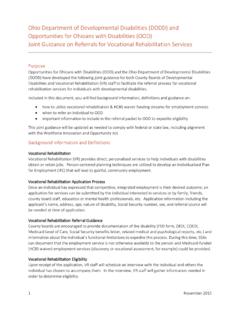Transcription of Palliative Management of Malignant Ascites Guidance
1 This is an official Northern Trust policy and should not be edited in any way Palliative Management of Malignant Ascites Guidance Reference Number: NHSCT/11/396. Target audience: This Trust-wide policy is directed to medical and nursing staff working with adult patients in the acute hospital setting. Sources of advice in relation to this document: Dr Jayne McAuley, Consultant Palliative Medicine Dr Olivia Dornan, Consultant A & E. Replaces (if appropriate): Previous Guidance for the Palliative Management of Malignant Ascites (2007). Type of Document: Trust Wide Approved by: Policy, Standards and Guidelines Committee Date Approved: 15 December 2010.
2 Date Issued by Policy Unit: 12 April 2011. NHSCT Mission Statement To provide for all, the quality of service we expect for our families, and ourselves. Palliative Management of Malignant Ascites Guidance December 2010. Contents Introduction 1. Purpose of the Guidance 1. Target Audience 1. Responsibilities 1. Equality, Human Rights and DDA 1. Alternative formats 2. Source of advice in relation to this document 2. Policy Statement 2. Management Plan 2. Checklist for Abdominal Paracentesis Consent 5. References 6. Palliative Management of Malignant Ascites Guidance Introduction Ascites is the accumulation of protein rich fluid in the peritoneal cavity and can be classed as an exudate or transudate depending on the serum Ascites albumin gradient.
3 It can occur in conditions such as cirrhosis of the liver, heart failure, tuberculosis but over 90% is secondary to malignancy. The commonest cancers to cause Ascites are ovarian, breast and gastrointestinal. Peritoneal involvement by the cancer causes an exudate to form with a high albumin content and low gradient (<11g/L), while less commonly a transudate can form secondary to cirrhosis or large liver metastases, with a low albumin content and high gradient (>11g/L). Purpose of the Guidance Malignant Ascites can give rise to distressing symptoms such as nausea, vomiting, abdominal distension, pain and breathlessness and carries a poor prognosis.
4 Treatment should therefore be minimally invasive with minimisation of the risk of complications and aimed at the relief of symptoms. This Guidance has been developed to support current best practice in the palliation of Malignant Ascites at the end of life. Target Audience This Trust-wide policy is directed to medical and nursing staff working with adult patients in the acute hospital setting. Responsibilities Directors Responsibility is delegated to individual Directors who have responsibility to ensure that this Guidance has been disseminated to the clinical staff working within their area of responsibility.
5 Clinical staff working in hospital and community environment It is the responsibility of clinical staff working with adult patients in the acute hospital setting to be aware of the Guidance and to implement it when appropriate. Equality, Human Rights and DDA. The Guidance is purely clinical in nature and will have no bearing in terms of its likely impact on equality of opportunity or good relations for people within the equality and good relations categories. 1. Alternative formats This document can be made available on request on disc, larger font, Braille, audio-cassette and in other minority languages to meet the needs of those who are not fluent in English.
6 Sources of advice in relation to this document The Guidance author, responsible Assistant Director or Director as detailed on policy title page should be contacted with regard to any queries on the content of this policy. Policy Statement The Management plan should be in line with current best practice but also be minimally invasive, aim to relieve distressing symptoms and reduce the risk of additional burden. The Palliative Management of Malignant Ascites in the NHSCT. should also be individualised, after an holistic assessment of the patient which should include their disease stage, current symptom burden, prognosis and informed goals of treatment.
7 Management Plan Assess patient suitability for intervention and record findings in the patient's records. If patient is too frail for either diuretics or invasive procedures, symptom Management with analgesia and antiemetics should be maximised, with the Hospital Specialist Palliative Care Team's involvement. Consider diuretics if abdomen not tense and symptoms mild or post paracentesis to reduce re-accumulation of ascitic fluid. There is some evidence that diuretics work best where there is evidence of portal hypertension (1). o check U&E & BP (baseline). o if no contra-indications commence Spironolactone 100-200mg mane dose increase 100mg every 3-7 days usual maintenance dose 300mg/day o If no response after 2 weeks, but renal function satisfactory and patient still suitable, consider addition of Furosemide 40mg mane (response may take 10-28/7 to be evident).
8 2. o monitor BP (hypotension), U&E (hyperkalemia, renal function), patient's general condition, response (symptoms, abdominal girth, weight loss) and discontinue medication if no evidence of benefit after 1 month or if significant side effects develop. Consider paracentesis if abdomen tense or symptoms moderate to severe. Paracentesis Should only be undertaken by doctor competent in this procedure, or under trainer supervision if part of practical skills training. Give appropriate explanation and obtain written consent. Ultrasound evaluation +/- marking of drainage site may be required if concern over diagnosis, suspicion of bowel obstruction or loculation of fluid.
9 IV fluids are not routinely required but patients with portal hypertension secondary to massive liver metastases or heptocellular carcinoma +/- cirrhosis may be at risk of hypovolaemia. IV albumin has no proven role in paracentesis for Malignant related Ascites (2) but if evidence of concomitant portal hypertension +/- cirrhosis, especially in the setting of large volume paracentesis (more than 5 litres/24 hours), an IV albumin infusion should be considered (6- 8g/L of ascitic fluid drained). Drain should be in for the shortest time possible to reduce complications especially infection and burden to the patient.
10 Procedure Record baseline pulse, BP and check U&E. Platelet count (plt > 40) and coagulation screen (INR < ) should be checked in at risk patients (previous chemotherapy / advanced liver disease) and corrective steps taken if appropriate. Stop routine anticoagulation 48 hours before the procedure. If hypotensive, dehydrated or severe renal impairment, consider IV. hydration with sodium chloride (150mls per litre of ascitic fluid removed) and drain more slowly, ( 1L/hr and 3L overall). Procedure should be performed by a doctor and nurse together to ensure aseptic technique.







